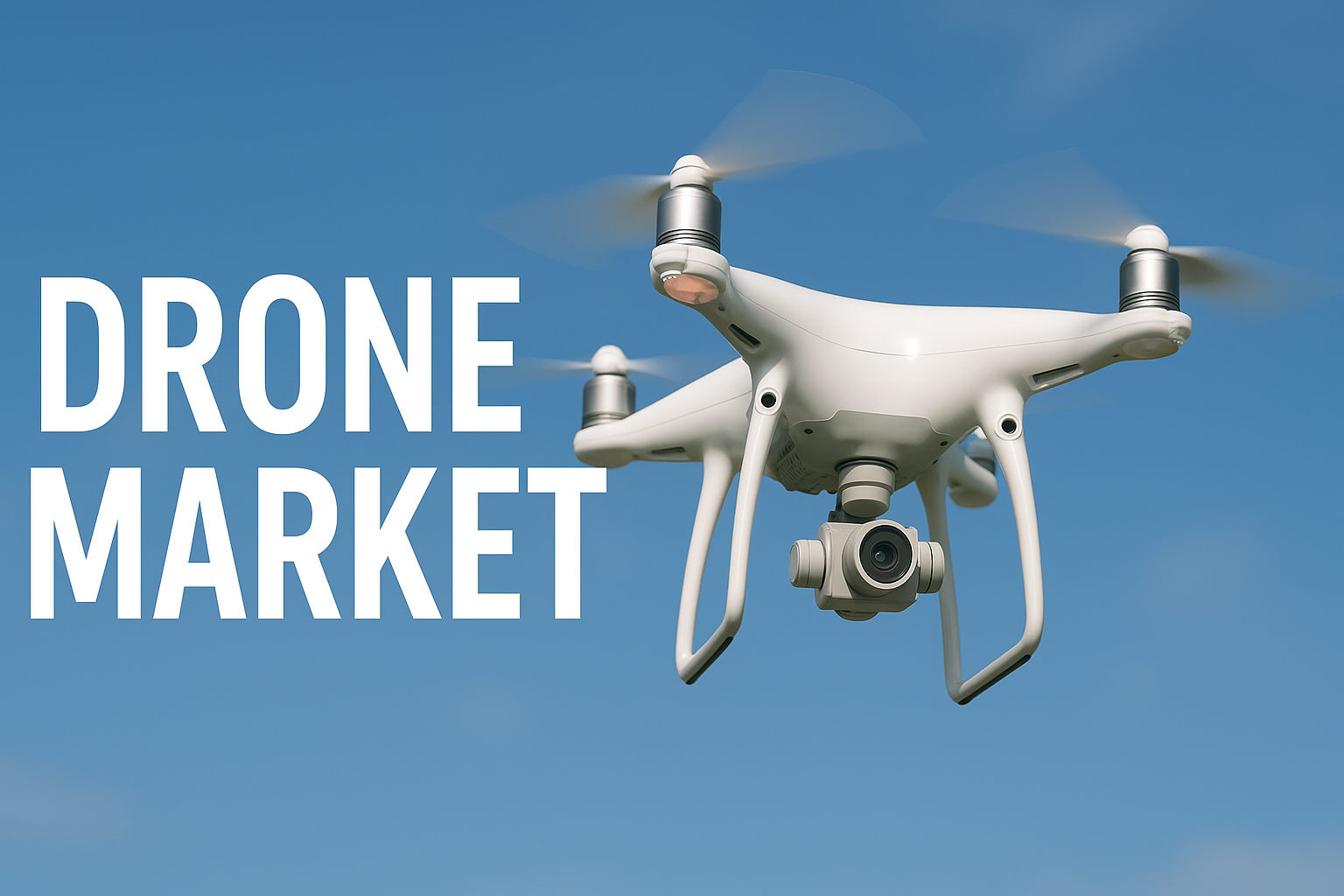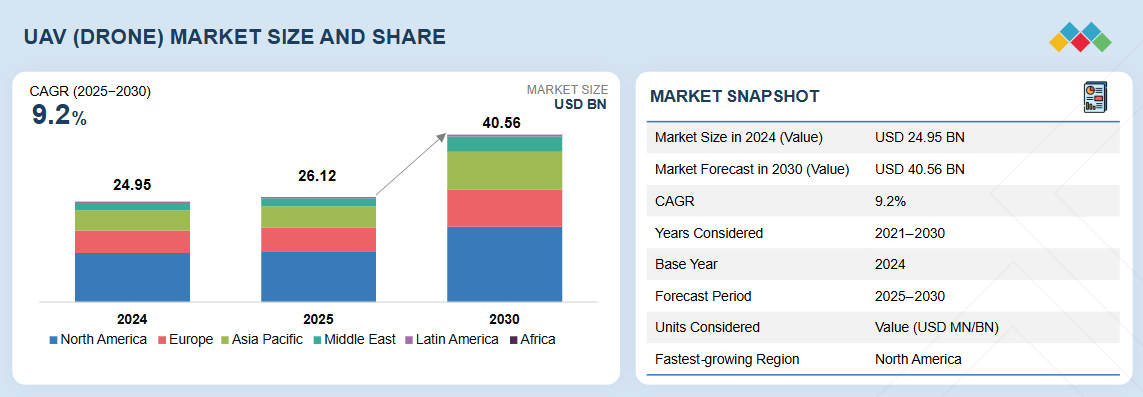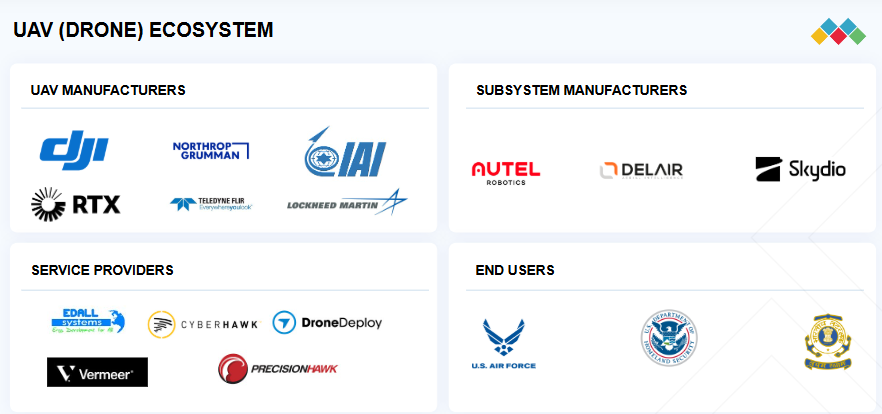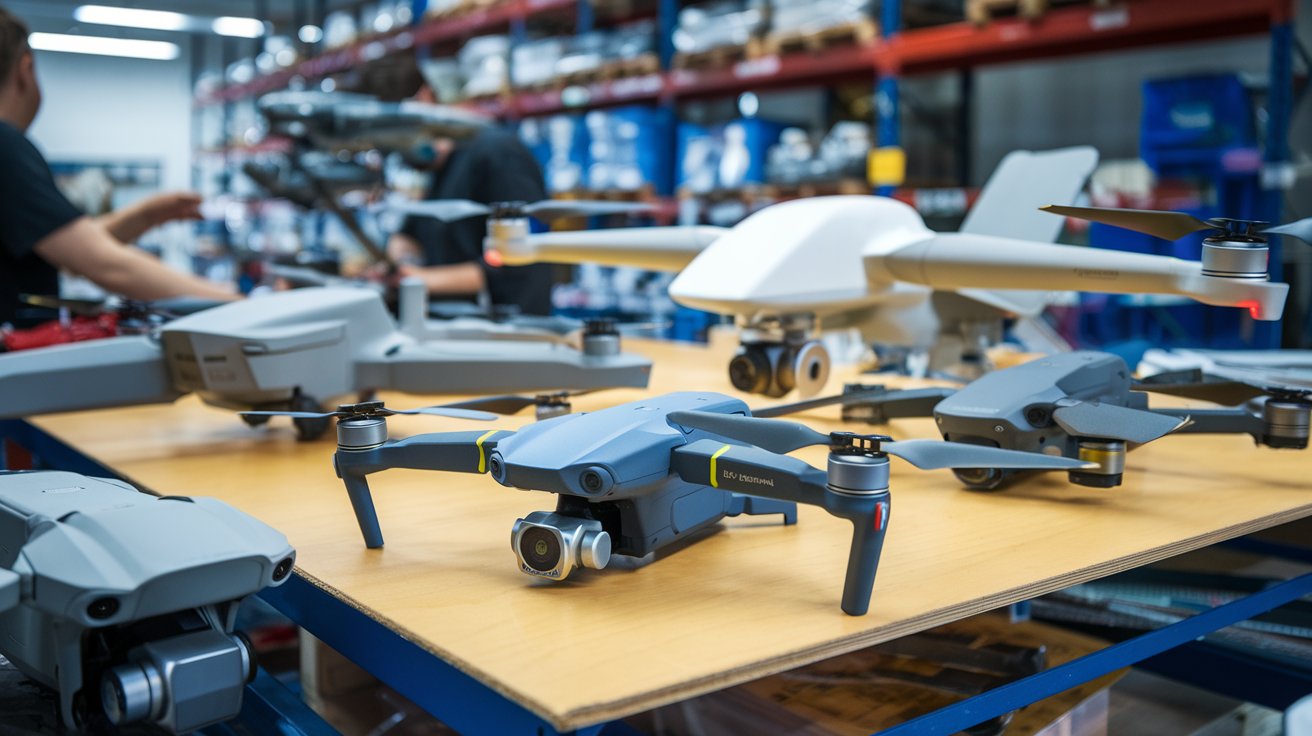The Drone Market has entered a phase of accelerated transformation, driven by advances in artificial intelligence, autonomous flight systems, and miniaturized sensor technologies. Drones are no longer viewed merely as recreational devices or military tools; they are vital assets reshaping industries such as logistics, construction, defense, agriculture, energy, and environmental monitoring. The growing demand for real-time data collection, aerial mapping, and automation has elevated the Drone Market into one of the most dynamic segments of the aerospace and technology ecosystem.

The continuous evolution of regulatory frameworks, along with increased venture capital investment, is enabling the rapid commercialization of drone-based solutions. Governments and enterprises are prioritizing airspace modernization and integrating unmanned aircraft into traditional aviation systems. This shift is creating new opportunities for manufacturers, software developers, and service providers in the Drone Market.
Download PDF Brochure @ https://www.marketsandmarkets.com/pdfdownloadNew.asp?id=662
Technological Advancements Driving Drone Market Expansion
Technological progress remains at the heart of Drone Market growth. Innovations in AI-powered navigation, collision avoidance, and image analytics have drastically improved operational efficiency and safety. Drones are now capable of beyond visual line of sight (BVLOS) operations, enabling large-scale data gathering and logistics support. The integration of 5G networks further enhances connectivity, allowing real-time communication between drones and command centers.
Moreover, hybrid propulsion systems and lightweight composite materials are extending drone flight endurance. Emerging trends such as swarm intelligence, edge computing, and cloud-based analytics are enabling multiple drones to work collaboratively, improving productivity across industrial applications. These advancements have redefined aerial operations, positioning the Drone Market as a critical enabler of smart infrastructure and automation.

Drone (UAV) Market Evolution: From Defense Platforms to Commercial Solutions
The Drone (UAV) Market has witnessed a remarkable shift from defense-oriented applications to commercial and industrial usage. Initially designed for reconnaissance and surveillance, unmanned aerial vehicles are now essential tools for delivery services, precision agriculture, disaster management, and environmental research. Their ability to access remote areas, capture high-resolution imagery, and perform automated inspections has created immense business value.
In the defense segment, UAVs continue to play an essential role in intelligence, surveillance, and reconnaissance missions. Military forces are increasingly investing in loitering munitions, tactical drones, and autonomous combat UAVs to strengthen situational awareness and operational readiness. The diversification of platforms—from micro drones to high-altitude long-endurance systems—illustrates the technological maturity and scalability of the Drone (UAV) Market.
Key Industry Players and Market Competition
The Drone Market is characterized by intense competition among key global players such as DJI, Parrot, Autel Robotics, AeroVironment, Skydio, and Teledyne FLIR. These companies dominate the commercial and industrial segments through innovative platforms, AI-based flight controls, and integrated software ecosystems. DJI continues to lead in consumer and enterprise drone solutions, while Skydio focuses on AI-driven autonomy for defense and inspection purposes.

In the Drone (UAV) Market, established aerospace and defense contractors like Northrop Grumman, General Atomics, Boeing, Lockheed Martin, and Textron Systems are expanding their unmanned portfolios. Their focus is on endurance, payload capacity, and mission flexibility. Collaborations between defense and commercial technology providers are accelerating UAV innovation, enabling faster prototyping and deployment of next-generation aerial systems.
Commercial and Industrial Applications
Commercial adoption is one of the most powerful growth drivers for the Drone Market. In agriculture, drones are used for crop health monitoring, pesticide spraying, and yield analysis. Construction and mining industries leverage drone-based mapping and volumetric analysis to reduce costs and improve precision. In logistics, companies like Amazon and UPS are experimenting with drone delivery to streamline last-mile operations and reduce emissions.
The Drone (UAV) Market has also expanded into oil and gas, utilities, and renewable energy. UAVs perform critical inspection of pipelines, offshore rigs, and solar farms with minimal human risk. Their use in surveying, law enforcement, and emergency response demonstrates their adaptability across complex environments. The healthcare sector is exploring UAV applications for medical supply delivery in remote or disaster-affected areas, reinforcing the humanitarian potential of drone technology.
Regulatory and Infrastructure Development
A major factor influencing the Drone Market is the evolution of regulatory frameworks that govern airspace integration and safety. Agencies such as the Federal Aviation Administration (FAA) and Transport Canada are actively shaping operational standards to support commercial drone use while maintaining public safety. The establishment of UAS Traffic Management (UTM) systems is crucial for coordinating low-altitude drone flights and preventing airspace congestion.
The Drone (UAV) Market benefits from similar initiatives aimed at harmonizing international standards. As countries adopt digital air traffic infrastructure, opportunities arise for cross-border drone operations, data sharing, and collaboration. The introduction of remote ID systems and certification procedures has further strengthened accountability, enabling smoother adoption of UAV-based services across industries.
Investment, Startups, and Emerging Opportunities
The investment landscape in the Drone Market is flourishing. Venture capital funds are pouring into drone hardware startups, analytics software firms, and platform integration providers. Emerging companies are developing autonomous inspection drones, AI-based flight management tools, and modular UAV architectures to serve specialized niches. The commercial ecosystem is witnessing partnerships between drone operators, cloud analytics companies, and enterprise software vendors.
The Drone (UAV) Market is equally dynamic, with new entrants focusing on specialized defense, border security, and surveillance solutions. Several startups are developing counter-UAV technologies, radar-based detection systems, and anti-drone defense mechanisms. This parallel development of offensive and defensive drone systems underscores the strategic importance of UAV technology in national security and infrastructure protection.
Market Challenges and Restraints
Despite robust growth, the Drone Market faces challenges such as cybersecurity risks, privacy concerns, and airspace restrictions. Unauthorized drone flights and data breaches have raised questions about security and compliance. Addressing these challenges requires collaboration between governments, manufacturers, and end-users to develop encryption standards and safe operating procedures.
In the Drone (UAV) Market, concerns around operational endurance, payload limitations, and weather resilience continue to influence adoption. However, continuous R&D investments are leading to breakthroughs in energy efficiency, autonomous landing systems, and adaptive flight control. The ability to combine safety assurance with operational flexibility will determine long-term UAV market sustainability.

Future Outlook and Strategic Trends
The Drone Market is expected to evolve into an integral component of smart city ecosystems, integrating with IoT platforms and AI-based urban analytics. Emerging opportunities in drone delivery, aerial taxis, and urban air mobility will expand the role of drones from data collectors to passenger and cargo transporters. Strategic collaborations among aerospace firms, telecom providers, and logistics companies will further accelerate this transformation.
Ask for Sample Report @ https://www.marketsandmarkets.com/requestsampleNew.asp?id=662
Similarly, the Drone (UAV) Market will experience deeper integration with defense modernization programs and civil aviation frameworks. UAVs will continue to evolve with enhanced endurance, stealth capabilities, and autonomous mission planning. The convergence of commercial innovation with defense-grade reliability will define the next phase of UAV development.
Both the Drone Market and the Drone (UAV) Market are reshaping the future of aerial operations, bridging the gap between technology, industry, and human capability. As the world moves toward automation, sustainability, and smart connectivity, drones are emerging as indispensable assets across every domain. The combination of innovation, regulation, and collaboration will continue to drive growth, ensuring that unmanned systems remain at the forefront of global digital transformation.
